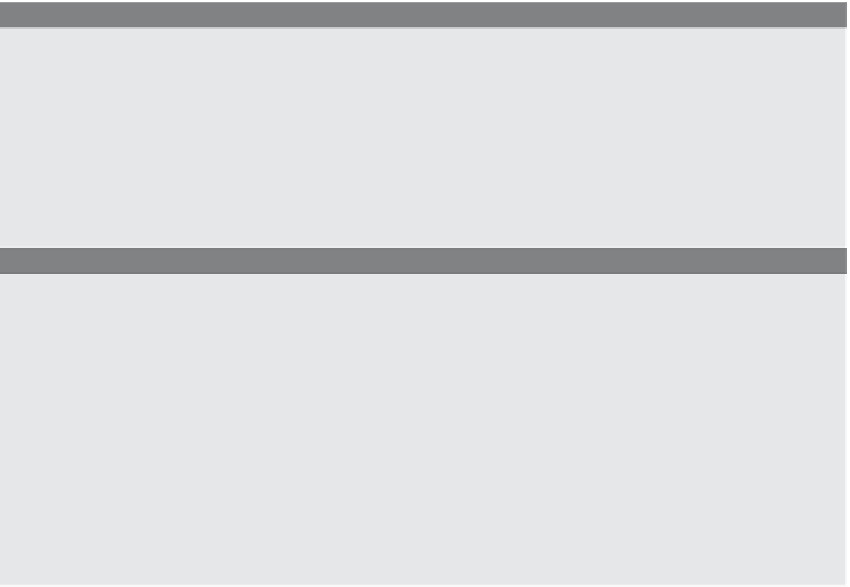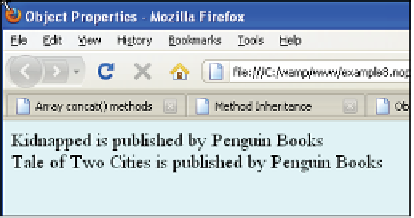HTML and CSS Reference
In-Depth Information
EXAMPLE
8.12 (
CONTINUED
)
document.write(book1.title + " is published by "+
4
book1.publisher
+ "<br />");
document.write(book2.title + " is published by " +
book2.publisher
);
</script>
</big>
</body>
</html>
EXPLANATION
1
The constructor function called
Book
will define the properties and methods for
a
Book
class. The function takes two parameters.
2
Two new Book objects are created,
book1
and
book2
.
3
The Book class has a
prototype
object. It is assigned a property called
publisher
.
Now the
publisher
property and its value are available to all Book objects.
4
In the last example only
book1
got the new property. Now both
book1
and
book2
have inherited the
publisher
property found in the Book's prototype (see Figure
8.14). If you don't want all topics to be published by “Penguin Books” you could
set the value of the publisher to “Unknown” as a default and change it later; for
example,
book2.publisher=“Viking Press”
and the
book2
object would get the value
“Viking Press.”
Figure 8.14
Using the prototype for inheritance.
When the program tries to retrieve an object's property, JavaScript first looks to see if the
property was defined directly for that object; for example, does the Book object have a
title
property? Does the Book object have a
author
property? If so, JavaScript retrieves
the property. If the property has not been defined, then JavaScript looks at the object's
prototype
to see if the property is defined there. If it is not defined there, JavaScript will
go up to the parent object. This process of going up the hierarchy, called the prototype



